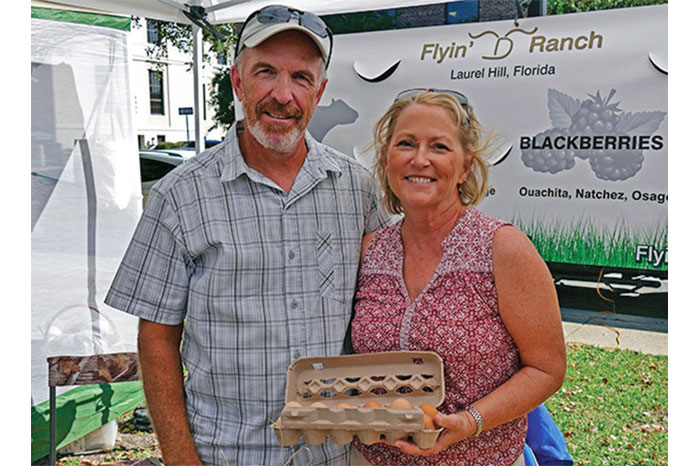USDA program gives boost to farmers and the conservation cause
STEWARDSHIP of our natural resources — environmentally and agriculturally — is an inherent and shared responsibility among everyone here on planet Earth. The combined results of people’s actions can either deplete resources or, through combined efforts and energies, be lent toward implementing sustainable solutions for generations to come. Conservation stewardship is one way to develop and increase the sustainability of natural resources.
The U.S. Department of Agriculture’s National Resources Conservation Service offers a Conservation Stewardship Program that provides a way for farmers and growers to build on their current agricultural endeavors to not only boost their businesses but also help conserve natural resources.
The Conservation Stewardship Program (CSP) is the largest conservation program in the United States, involving more than 70 million acres of forestland, cropland, rangeland, and pastureland, and thousands of volunteers. Some of the natural resource concerns addressed by the program’s funding are plant and wildlife health, soil and water quality and quantity, and erosion.
Management practices the program has helped to fund include grazing management to improve wildlife habitat, monitoring key grazing areas, restoring rare and declining habitats, and maintaining riparian buffers — or lands adjacent to streams where vegetation is strongly influenced by the presence of water.
Randy and Tracey Duncan are a retired couple in Crestview, Florida. They own Flyin’ D Ranch, where they raise grass-fed and antibiotic- and hormone-free Brangus cattle; chickens and turkeys; and Tamworth hogs. They also grow and harvest a variety of fruit and vegetable crops, like muscadine grapes and blackberries. They sell eggs at local farmers markets and make jelly from their grapes and blackberries to share with family members and friends. The Duncans began their CSP contract in 2014 and had it renewed for 2015 and 2016.
“It is important for farmers and ranchers who want to enroll in CSP to talk to the district conservationist at their local USDA field office,” explains Renee Bodine, a public affairs officer with the USDA National Resources Conservation Service.
Bodine says a district conservationist planner can present many options and ideas to help farmers and ranchers meet their business-related conservation goals. For example, she says, the Duncans’ district conversationalist, Daryl Williams, “helped develop a conservation plan and get technical and financial assistant to plant grass, build cross-fencing, install drip irrigation, and install a solar panel to power a water pump that supplies water to cattle on two pastures.”
All CSP contracts have a minimum payment of $1,500. Registration is open until Feb. 3, 2017.
For more information about the CSP, go online to NRCS.USDA.org.
CREDIT
article by JULIE GMITTER

